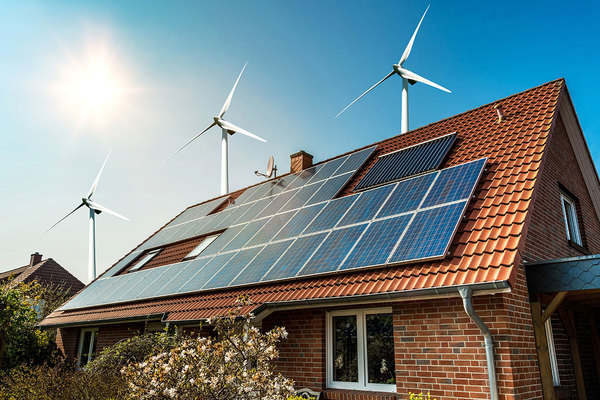You are viewing 1 of your 1 free articles
 Cecily Church
Cecily ChurchAs Sustainability Manager for The Guinness Partnership, Cecily oversees the housing association’s retrofit programme. This spans data ...more
The axing of FIT is a blow – but there is still much landlords can do on sustainability
Social landlords looking to pursue a sustainability agenda face a limbo period after the scrapping of the Feed-In Tariff (FIT), but the future isn’t all gloomy, argues Cecily Church
Thanks to the recent astonishing weather, UK solar power has been enjoying its time in the sun. Weekly records for power generation were broken in June, according to research firm Sheffield Solar, and renewables briefly overtook gas as the UK’s top source of energy.
But clouding these achievements was the news that the FIT, which supports small-scale renewable installations (particularly solar), will end next year.
FIT has driven the installation of over 800,000 small-scale renewable schemes across the UK since 2010, totalling around 6GW of power, according to official statistics.
But after several drastic reductions in its rate, FIT will be going out, not with a bang but with a whimper.
A consultation set out by the Department of Business, Energy and Industrial Strategy proposed to end it from April, with a consultation on its closure running until September.
“The gradual decline of FIT has been a particular blow to social landlords, since the subsidy initially offered them a double win.”
The implied end to the export rate as well as the generation rate – not something that was originally intended – is the final nail in the coffin for a subsidy that has dropped by approximately 90% between 2010 and 2018.
The gradual decline of FIT has been a particular blow to social landlords, since the subsidy initially offered them a double win: free, low-carbon energy for residents and a long-term source of income for them.
It provided a part of the solution to fuel poverty, while helping to reduce carbon footprints and originally enabled housing providers to self-fund the installations.
The government argues that renewable energy costs have fallen to a point where they can cost effectively compete with other power sources without direct subsidy. It has also said that its emphasis is on lower bills and fairer energy costs for consumers.
However, the removal of both the generation and export tariffs will mean that renewable energy generators will provide unused electricity to the grid for free.
Surely the wholesale removal of FIT goes beyond levelling the energy playing field, and puts small-scale renewables at a disadvantage against other energy sources? And it is not as though energy consumers will see major benefits; the closure of FIT is expected to save the average household just £1 a year on energy bills.
For housing providers, there looms a limbo period between the end of FIT and the introduction of any replacement form of support.
Already the fall in FIT rates has caused installation rates to stagnate and a period of policy uncertainty will not help to resolve this.
Clear signals from government are therefore needed as soon as possible, to reassure social landlords seeking to invest in renewables and trigger the resurgence in clean energy which is needed to meet carbon reduction targets.
In the meantime though, there are still good reasons to look on the bright side. Renewable costs have indeed been falling rapidly, with median costs for small solar panel installations dropping 67% between 2010 and 2017.
“Clear signals from government are therefore needed as soon as possible, to reassure social landlords seeking to invest.”
Meanwhile alternative funding solutions, both public – such as the Renewable Heat Incentive and Energy Company Obligations – and private – including power purchasing agreements and ethical banking options – still offer a myriad of options.
For housing providers looking to pursue a sustainability agenda, here are four key considerations going forward:
- They can have their voice heard by contributing to the government’s call for evidence on green power support; this is an ideal opportunity to advocate clean energy support that simultaneously tackles fuel poverty and benefits vulnerable residents. While waiting for further government action, there is no need for social landlords to sit on their laurels
- An exciting range of new complementary technologies are emerging, including battery storage and electric vehicles, and housing associations are well placed to make the most of them and push for government support for them in future
- Funding and support models for renewables are expanding and diversifying, creating new financing prospects for sustainability schemes
- Alongside new innovations, there is still an important place for building fabric improvements
Energy efficiency retrofits continue to be the best way of delivering energy savings to residents cost-effectively, and can be combined with renewable installations to maximise housing sustainability and funding opportunities.
So for FIT, the end is nigh.
But for forward-thinking housing providers looking to reduce their environmental impact and improve the lives of their residents, the future still looks bright.
Cecily Church, sustainability consultant, Sustainable Homes











